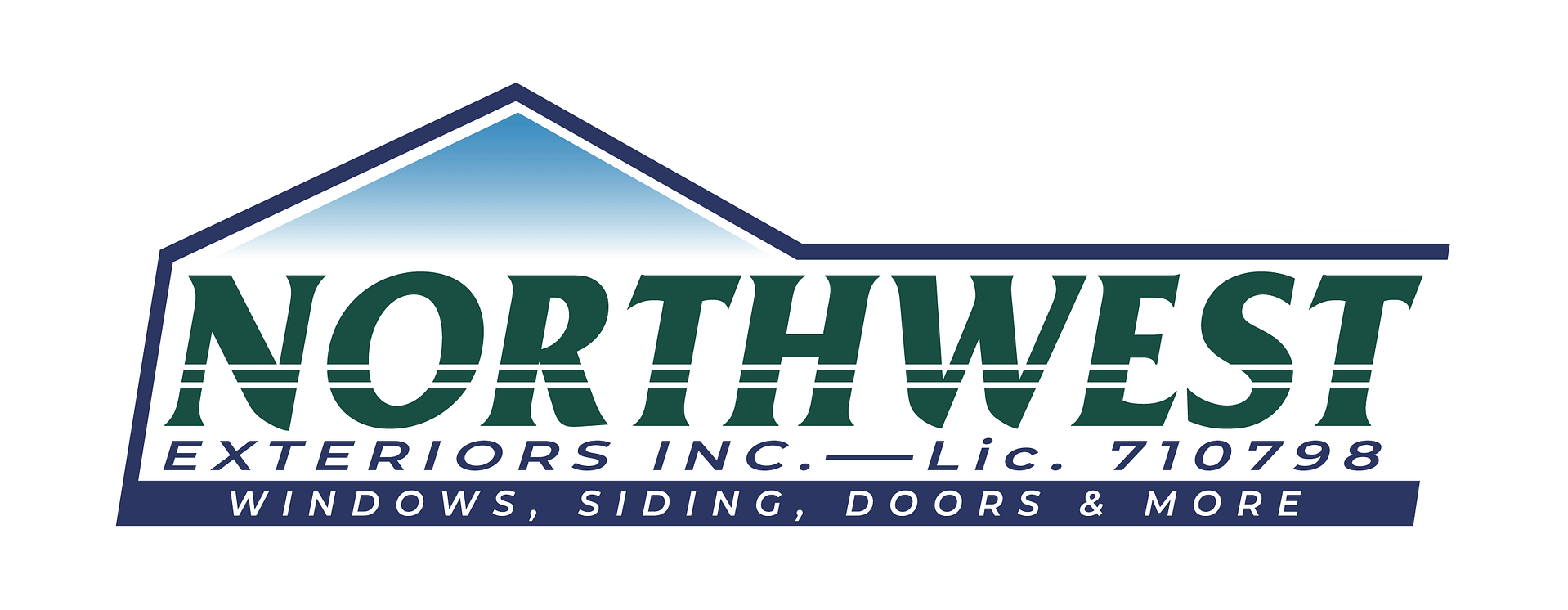
Older homes often have outdated windows that leak moisture, cause drafts, and increase energy costs year after year. If you have older windows, you’re probably thinking about which new models to replace them with. If energy efficiency and lower costs are a top priority, Low-E windows are a great option. Properly installed and crafted from quality materials, Low-E windows can tick off every item on your wish list.
Are you considering upgrading to Low-E windows but unsure about your local installation options? This guide provides valuable insights regarding Sacramento replacement windows and the services offered by Northwest Exteriors. Readers will learn about the benefits of Low-E technology, the installation steps involved, and how to choose the right options for their homes. Addressing common concerns about performance and customer service, this content aims to simplify your decision-making process for a successful installation experience.
Understanding Low-E Windows and Their Benefits
Low-E coatings, or low-emissivity coatings, are a key feature of energy-efficient windows that help regulate temperature and reduce utility costs. These windows effectively minimize ultraviolet and infrared light while allowing visible light to pass through, enhancing comfort in spaces like bathrooms. Furthermore, the use of argon gas between panes improves insulation, contributing to long-term savings and, in some cases, qualifying for tax credits. This section will explore the benefits of Low-E technology, its positive environmental impact, and how these installations can lead to significant cost savings over time.
What Low-E Coatings Are and How They Work
Low-E coatings, or low-emissivity coatings, are specially designed thin layers applied to window glass that significantly reduce the amount of ultraviolet and infrared light entering a home. This technology allows visible light to pass through while minimizing heat transfer, making it an ideal choice for energy-efficient installations, such as a Pella sliding glass door from Sacramento replacement windows. By reflecting heat back into spaces, Low-E windows can help homeowners achieve greater comfort and potentially lower utility prices over time, as highlighted in the northwest exteriors profile.
Energy Efficiency Benefits of Low-E Windows
Low-E windows offer significant energy efficiency benefits, making them an excellent choice for homeowners considering sacramento replacement windows. These windows, often featuring advanced lamination techniques, minimize heat transfer while allowing beneficial sunlight to illuminate living spaces. Products certified by Energy Star help homeowners enjoy long-term savings on energy bills and improved comfort throughout their homes, particularly in regions with extreme temperatures.
Environmental Impact of Using Low-E Windows
The environmental impact of using low-emissivity (Low-E) windows is significant, particularly when considering options like vinyl windows and awning styles for homes. These energy-efficient installations help reduce overall energy consumption, contributing to lower greenhouse gas emissions. For instance, in a basement setting, Low-E windows can help maintain optimal indoor temperatures, thereby reducing the need for excessive heating or cooling, which is not only cost-effective but also environmentally responsible.
Comfort Factors Enhanced by Low-E Technology
Low-E technology significantly enhances comfort within homes by effectively managing heat transfer and blocking harmful UV rays. With a specialized coating on various window types, homeowners can enjoy a more consistent indoor temperature, making spaces more inviting regardless of outside conditions. This improvement not only promotes a healthier living environment but also helps minimize window replacement costs, as energy-efficient products often lead to lower utility bills over time, particularly when considering options like energy-efficient doors.
Cost Savings Over Time With Low-E Installations
Investing in Low-E window installations can lead to significant cost savings over time for homeowners. These energy-efficient windows minimize solar gain, which helps maintain comfortable indoor temperatures while reducing reliance on heating and cooling systems. Furthermore, options such as casement windows and bay windows not only enhance the aesthetic appeal of a home but also improve noise reduction, leading to a quieter living environment and lower energy bills throughout the year.
Identifying Local Low-E Window Installation Services
Finding reliable local low-E window installation services involves several steps. Homeowners should begin by searching for installation experts near them and evaluating customer reviews and ratings for insights on quality. Comparing quotes from local contractors, assessing their certifications and experience, and scheduling consultations can provide personalized service. These methods can guide homeowners toward choosing the right professionals for their energy-efficient needs, including options like double-hung windows with low emissivity coatings.
How to Search for Installation Experts Near You
Homeowners seeking Low-E window installation experts should begin by searching online for professionals in their area who specialize in energy-efficient options, including patio and skylight installations. Evaluating each contractor’s credentials, such as Energy Star certification, will provide assurance of their commitment to quality standards and energy savings. It’s also beneficial to read customer reviews and request recommendations from neighbors to identify trusted installers who understand local climate conditions and can effectively address concerns like infrared heat management.
Evaluating Customer Reviews and Ratings
When evaluating customer reviews and ratings for local Low-E window installation services, homeowners should focus on feedback regarding the quality of workmanship and the company’s adherence to warranties. Reviews can reveal insights into the effectiveness of the exterior products used, helping customers gauge the long-term benefits, including potential rebates or savings on energy costs. Additionally, finding a service provider with a strong reputation can greatly enhance the home improvement experience, giving you peace of mind throughout the installation process.
Comparing Quotes From Local Contractors
When comparing quotes from local contractors for Low-E window installation, homeowners should consider multiple factors to ensure they make an informed decision. Evaluating the materials offered, such as laminated glass or wood for framing, is essential as these choices can greatly affect both cost and energy efficiency. It’s also advisable to confirm that the window installers provide detailed quotes that outline the scope of work, including any additional services like the installation of storm windows, to avoid potential surprises on the floor during the project.
Assessing Certifications and Experience of Installers
When assessing certifications and experience of installers for Low-E window installations, homeowners should prioritize contractors with credentials from reputable organizations, such as Energy Star or similar entities. Experienced professionals are more likely to provide effective solutions for managing heat transfer in replacement windows, ultimately resulting in improved energy efficiency and comfort within the home. By verifying these qualifications, homeowners can be confident they are working with skilled specialists capable of delivering quality installations that meet their energy-saving needs:
Scheduling Consultations for Personalized Service
Scheduling consultations with local Low-E window installation professionals allows homeowners to discuss their specific needs and receive tailored advice. During these meetings, homeowners can ask about energy efficiency, available materials, and installation options, confirming the chosen products align with their home’s requirements. This personalized approach not only enhances the selection process but also provides valuable insights into maximizing energy savings:
The Installation Process for Low-E Windows
The installation process for Low-E windows includes several key steps that ensure a seamless and efficient experience. This section will outline a step-by-step guide to the installation, preparation tips for homeowners, and an overview of the tools and materials used. Additionally, it will cover important safety precautions for installation day and highlight post-installation inspection and adjustments. Each aspect plays a vital role in optimizing the performance of these energy-efficient windows.
Step-by-Step Guide to Low-E Window Installation
The installation of Low-E windows is a precise process that requires proper planning and execution for optimal energy efficiency. It begins with measuring the existing window openings so the new windows fit correctly, followed by removing the old windows carefully to prevent damage to the surrounding structure. After preparing the area, including proper sealing to enhance insulation, the new Low-E windows are set in place and secured, making sure all gaps are filled to minimize air leakage:
Preparing Your Home for Installation
Preparing a home for the installation of Low-E windows involves several key steps for a successful process. Homeowners should start by clearing the area around the existing windows, including removing any furniture, décor, or obstacles that could hinder access. Additionally, checking for any repairs needed on the window frames will help in achieving a better fit for the new energy-efficient windows, ultimately enhancing insulation and performance:
Understanding the Tools and Materials Used
The tools and materials used for Low-E window installation play a crucial role in a successful process. Installers typically utilize a range of hand tools, such as levels, measuring tapes, and utility knives, along with safety equipment like gloves and goggles to promote secure handling. Additionally, high-quality caulking and weather stripping are essential materials that enhance the energy efficiency of Low-E windows, helping to seal any air leaks and improve insulation, ultimately leading to better performance and comfort for homeowners.
Safety Precautions for Installation Day
On installation day, prioritizing safety is essential for both the installation team and homeowners. Proper safety gear, including gloves and protective eyewear, should be worn to prevent injuries while handling Low-E windows. It’s also crucial to clear the surrounding area of any obstacles that could lead to accidents, facilitating a safe working environment as professionals efficiently install energy-efficient windows that enhance comfort and performance in the home.
Post-Installation Inspection and Adjustments
Post-installation inspection and adjustments are critical for ensuring Low-E windows perform optimally in a home. After installation, professionals should closely examine each window to verify proper sealing, alignment, and functionality. This assessment helps identify any areas needing adjustments, so homeowners enjoy the full benefits of energy efficiency and comfort while preventing future issues related to air leakage or insulation failures.
Comparing Different Brands and Options in Low-E Windows
This section provides a comprehensive overview of top Low-E window manufacturers, detailing the essential features to consider within various brands. It will cover energy ratings and performance comparisons to assess efficiency, while also examining warranty options for peace of mind. Additionally, insights into customer experiences with different product lines will be explored to guide homeowners in making informed decisions.
Overview of Top Low-E Window Manufacturers
Several prominent manufacturers specialize in Low-E windows, each offering unique features and benefits for homeowners. Renowned brands such as Pella, Andersen, and Simonton are known for their commitment to energy efficiency and quality craftsmanship. Homeowners can find a variety of styles, energy ratings, and warranty options across these brands, allowing for personalized choices that fit their specific needs while enhancing the overall comfort and aesthetic appeal of their homes.
Features to Look for in Various Brands
When comparing Low-E windows from various brands, homeowners should focus on features such as energy ratings, insulation properties, and warranty options. A higher energy rating indicates greater efficiency, which can lead to lower utility costs over time. Additionally, robust warranties provide assurance of quality and long-term performance, making it essential for homeowners to consider their options carefully as they select windows that meet their specific needs while enhancing comfort and energy savings in their homes.
Energy Ratings and Performance Comparisons
Energy ratings are a critical aspect to consider when assessing Low-E windows, as they directly correlate with the windows’ efficiency and performance. High ratings, such as those provided by Energy Star, indicate superior insulation and energy savings, helping homeowners reduce monthly utility bills. For instance, when comparing models from various brands, a product with an excellent performance rating can significantly enhance indoor comfort by maintaining stable temperatures, ultimately guiding homeowners toward selecting the most suitable Low-E window options for their needs.
Understanding Warranty Options
Warranty options are an important consideration when choosing Low-E windows, as they provide homeowners with peace of mind regarding their investment. Various manufacturers, including well-known brands like Pella and Andersen, offer different warranty terms that cover aspects such as materials, workmanship, and product performance. Homeowners should carefully evaluate warranty details so they receive adequate protection against defects and long-term support, as this significantly enhances the value of their window installation:
Customer Experiences With Different Product Lines
Customer feedback on different product lines of Low-E windows often highlights differences in performance and satisfaction. Many homeowners appreciate brands like Pella and Andersen for their robust energy efficiency and quality craftsmanship, reporting noticeable reductions in utility bills and improved indoor comfort after installation. Simonton also receives positive remarks for its extensive warranty coverage, giving customers confidence in their investment and enhancing the overall experience of upgrading their homes with modern, energy-efficient solutions.
Common Issues and Solutions After Installation
Homeowners may encounter various challenges after Low-E window installation, such as troubleshooting issues, maintenance tips for longevity and performance, and recognizing when to seek professional help for repairs. Seasonal adjustments play a crucial role in optimizing usage, while identifying signs of damage or wear helps windows remain effective. This section provides essential insights on maintaining Low-E windows to maximize their benefits.
Troubleshooting Issues With Low-E Windows
When homeowners face issues with Low-E windows, common problems often include condensation, improper sealing, or operational challenges. Condensation between panes may indicate a failure of the insulating seal, necessitating professional evaluation for potential replacement. Proper clearing of the surrounding area and regular maintenance helps prevent issues, while being proactive about any noticeable changes in performance can ultimately enhance the longevity and efficiency of Low-E windows.
Maintenance Tips for Longevity and Performance
Regular maintenance of Low-E windows is essential to maximize their longevity and performance. Homeowners should clean the glass and frames with mild soapy water to remove dirt and grime, while avoiding abrasive cleaners that may damage the coating. In addition, inspecting the seals for any signs of wear and making necessary adjustments or repairs will help prevent air leakage and condensation, so windows continue to provide optimal energy efficiency over time:
When to Seek Professional Help for Repairs
Homeowners should seek professional help for repairs when they notice persistent issues with their Low-E windows, such as significant air leakage, condensation between panes, or difficulties in operation. These problems can compromise both comfort and energy efficiency, making it essential to have trained specialists assess and address the situation. Prompt action not only preserves the integrity of the installations but also guarantees the benefits of energy savings and optimal performance are maintained over time.
Seasonal Adjustments for Optimal Use
Seasonal adjustments play a vital role in optimizing the performance of Low-E windows throughout the year. Homeowners should regularly inspect seals and weather stripping as weather conditions change, so they continue to provide effective insulation and prevent air leakage. Additionally, during winter months, adjusting window treatments can help maximize energy efficiency by retaining heat within the home, while summer months may require increased ventilation to maintain comfortable indoor temperatures.
Identifying Signs of Damage or Wear
Identifying signs of damage or wear on Low-E windows is crucial for maintaining their energy efficiency and comfort levels in a home. Homeowners should regularly inspect for issues such as condensation between panes, which indicates a potential failure in the insulating seal. Other signs include cracks, gaps, or mold growth around the window frame, all of which may affect the performance and durability of the windows:
Financial Considerations for Low-E Window Installation
Estimating installation costs and budgeting for Low-E window upgrades is essential for homeowners. This section covers financing options available, including loans and payment plans, as well as potential tax credits and incentives for energy-efficient upgrades. Additionally, the long-term savings achieved through improved energy efficiency and the positive impact on home value post-installation will be discussed.
Estimating Installation Costs and Budgeting
Estimating installation costs for Low-E windows requires homeowners to consider several factors, including window size, type, and installation complexity. Generally, prices can range widely based on these variables, so obtaining multiple quotes from local contractors is advisable to get a clearer idea of the financial commitment involved. By budgeting for unexpected expenses, such as structural repairs or custom sizes, homeowners can facilitate a smoother installation process:
Exploring Financing Options for Homeowners
Homeowners looking to invest in Low-E window installations have several financing options to consider. Many local contractors offer payment plans or financing programs specifically designed for energy-efficient upgrades, making it more manageable to cover initial costs. Additionally, homeowners should explore potential tax credits or incentives available for energy-efficient improvements, which can further alleviate financial burdens and enhance savings in the long run:
Tax Credits and Incentives for Energy-Efficient Upgrades
Tax credits and incentives for energy-efficient upgrades can significantly lower the financial burden of replacing windows with Low-E options. Homeowners may qualify for state or federal tax benefits that promote energy-saving installations, which can lead to substantial savings on their overall expenses. Engaging with local contractors familiar with these programs can provide valuable insights into available incentives and help maximize financial returns on energy-efficient investments.
Long-Term Savings Through Energy Efficiency
Investing in Low-E windows significantly contributes to long-term savings by enhancing energy efficiency within homes. Homeowners can experience reduced utility bills as these windows minimize heat transfer, resulting in a more regulated indoor environment. Furthermore, by lowering energy consumption, owners may also qualify for various incentives and rebates, amplifying overall financial benefits while boosting the home’s value.
Impact on Home Value After Installation
Investing in Low-E window installations can significantly boost a home’s value. Energy-efficient windows not only enhance aesthetic appeal but also attract potential buyers seeking modern and eco-friendly features. As energy efficiency becomes a top priority for many homeowners, properties equipped with Low-E windows typically command higher resale prices and quicker sales compared to those lacking such upgrades, providing a valuable return on investment.





